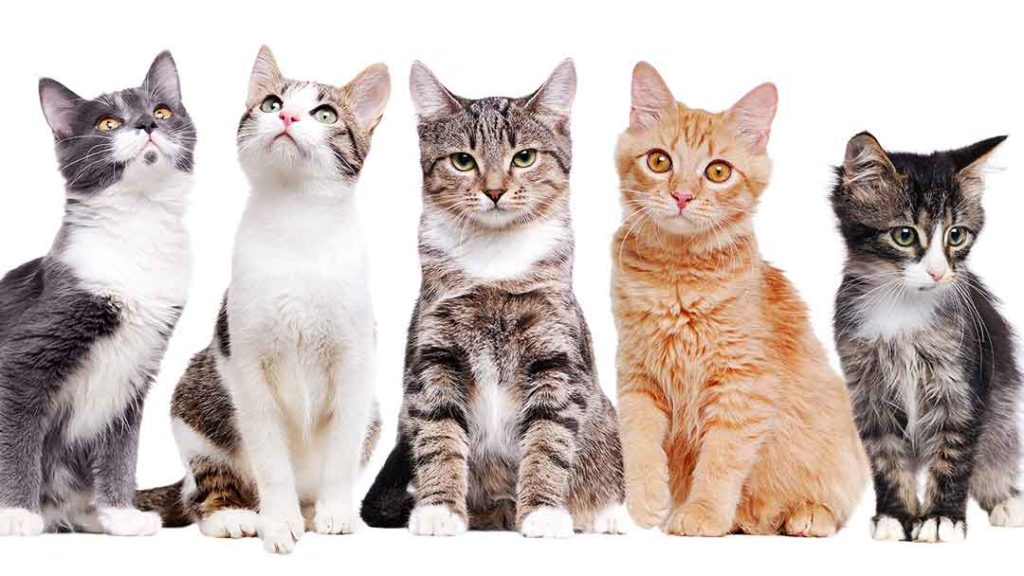Have you ever caught your cat staring intently at a brightly colored toy, or perhaps a particularly vibrant patch of sunlight? It’s easy to assume our feline friends are captivated by the colors they see, but is there truth to the idea of a cat’s favorite color? The relationship between cats and color is an intriguing one and a topic of ongoing debate in the pet world. As a cat owner who’s witnessed countless playful moments with my furry companion, I’ve often wondered what colors captivate their attention most. Let’s dive into the fascinating world of felines and their perception of color.

Image: www.pinterest.es
While we may envision our cats seeing a kaleidoscope of colors like we do, reality is quite different. Their visual world is a blend of shades and hues, with a particular sensitivity to certain colors. Understanding the nuances of cat vision can help us decipher their preferences and better appreciate their perspective on the world around them.
The Science Behind Cat Vision
Limited Color Perception
Cats are dichromats, meaning they see the world in two primary colors: blue and green. They lack the third cone receptor that allows humans to see red, which means their color spectrum is rather limited. They might be able to discern lighter shades of red and orange, but these colors will appear similar to shades of green and yellow.
Enhanced Night Vision
To compensate for their limited color perception, cats have evolved with extraordinary night vision. They have a higher concentration of rod cells in their retinas, which are responsible for low-light vision. These rods are extremely sensitive to light, allowing cats to see in conditions where humans would struggle. This heightened sensitivity also explains why cats tend to be more active at dusk and dawn.

Image: www.thehappycatsite.com
What Colors Do Cats See Best?
While cats may not have a wide color palette, they do excel at detecting variations in brightness and contrast. They see shades of blue and green more vividly than other colors. This means that bright blue and green toys or items are more likely to catch their attention.
Choosing Toys and Environments
Knowing the limitations of a cat’s vision can help us create stimulating environments and choose toys that are visually appealing. Brightly colored toys in shades of blue and green, along with high-contrast patterns, are likely to be most engaging for cats. Additionally, consider using light and shadow to create interest within their play areas.
Tips for Choosing the Right Colors
Here are some actionable tips for incorporating color into your feline’s world:
- Choose toys with vibrant blues and greens: Toys in vibrant shades of blue and green are more likely to grab a cat’s attention due to their enhanced perception of these colors.
- Use high-contrast patterns: Cats are drawn to patterns that stand out against their surroundings. Consider toys with bold stripes, polka dots, or geometric shapes.
- Light and Shadow Play: Utilize natural light and strategically placed lamps to create areas of light and shadow. These contrasts can make the environment more engaging and stimulating for your cat.
- Experiment with different hues: While cats see a limited range of colors, experimenting with different shades of blue, green, and even yellow can help you determine which colors your cat is most drawn to.
Experts on Cat Vision
Veterinarians and animal behaviorists have a wealth of knowledge about feline vision. They can offer valuable insights on how to cater to your cat’s visual preferences. Local animal shelters and rescue organizations often host educational events or workshops where you can learn more about cat behavior and vision.
Frequently Asked Questions
Q: Can cats see in the dark?
<p>A: While cats are excellent at seeing in low-light conditions, they cannot see in complete darkness. Their exceptional night vision allows them to see much better than humans would in dimly lit environments, but they still require some level of light to see.</p>Q: Do cats have a favorite color?
A: While cats don’t have a favorite color in the same way humans do, they are more likely to be drawn to bright blue and green colors. Their sensitivity to these colors and ability to detect contrast make these shades particularly appealing to them.
Q: Can I train my cat to associate different colors with specific actions?
A: While cats may not form a strong association between colors and specific actions, they can learn to respond to visual cues. You can use a brightly colored toy to signal playtime, or a particular color blanket to indicate a designated nap area.
What Is A Cat’S Favorite Color
Conclusion
While the mystery of a cat’s favorite color may never be fully solved, understanding their unique vision allows us to create a world that is stimulating and engaging for them. From bright toys to strategically designed environments, we can appeal to their senses and create a space where they can thrive. So, next time you’re choosing a new toy for your feline companion, remember their sensitivity to blue and green, and embrace the fascinating world they see through their own special lens.
Are you interested in learning more about cat vision and how to create a visually enriching environment for your feline friend? Tell us in the comments below!






